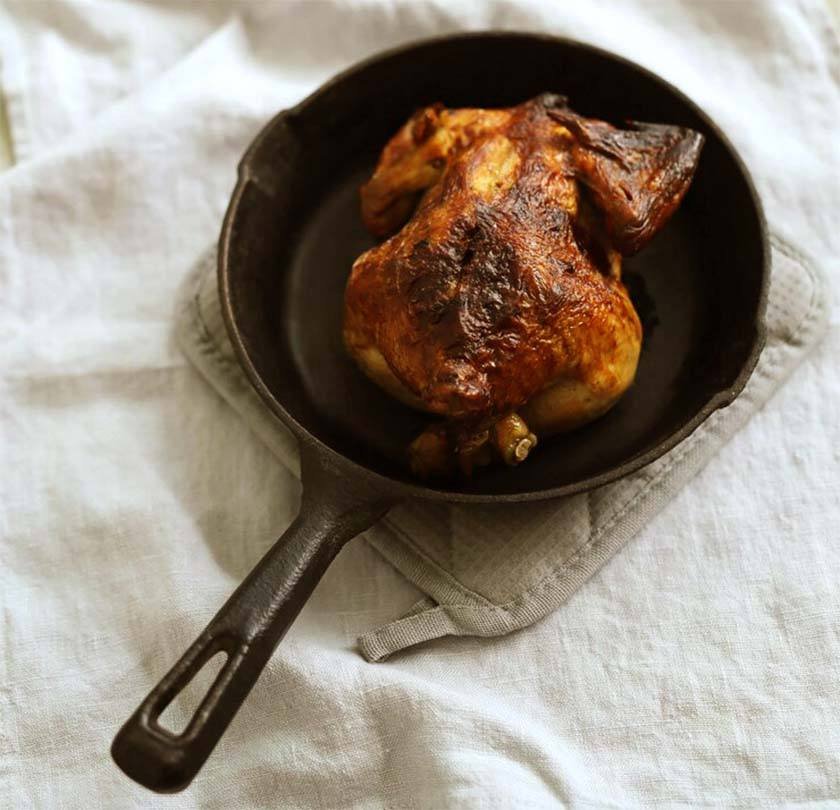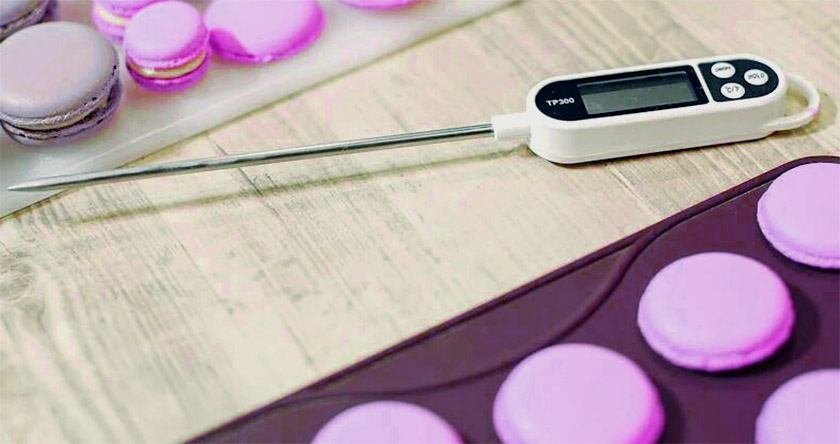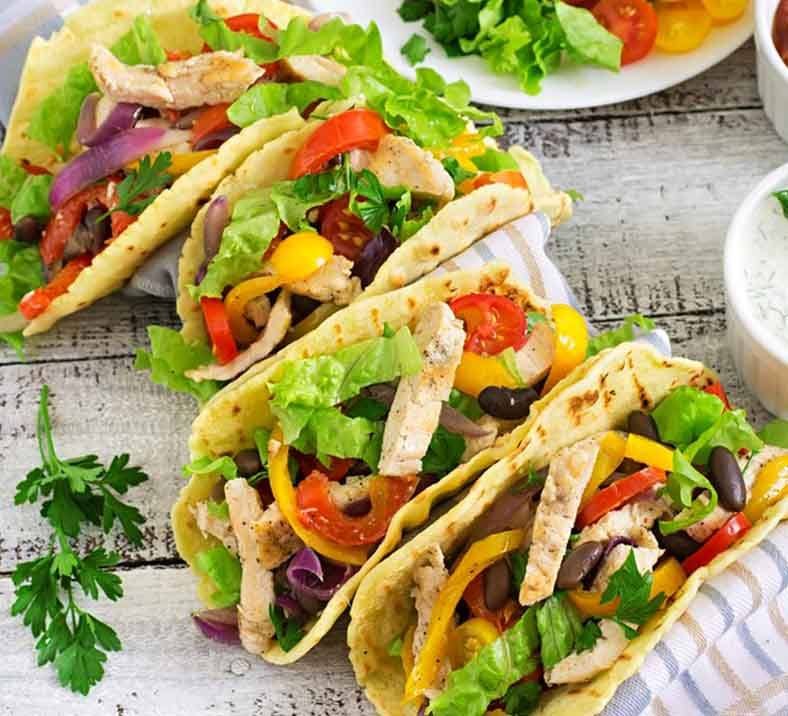Finding the best way to reheat chicken can be a culinary challenge, as it often results in dry, unappetizing outcomes if not done properly.
This guide will explore the best methods to reheat chicken while maintaining its juiciness and flavor. You will learn various techniques, from using your oven to the convenience of the microwave, along with tips to enhance moisture and taste.
Additionally, the guide will cover how to ensure your reheated chicken is safe to eat and offer creative ways to repurpose those leftovers. By the end, you will be well-equipped to elevate your reheating skills.
What Are the Best Ways to Reheat Chicken?
Reheating chicken is a delicate process that necessitates careful attention to moisture retention and flavor preservation. Whether you are working with juicy chicken breasts or tender chicken thighs, understanding the best methods for reheating chicken can help you maintain food quality while ensuring safety.
There are several reheating methods available, including the oven, stovetop, microwave, and slow cooker, each offering distinct advantages. This guide will explore the best way to reheat chicken, offering culinary techniques to help you enjoy your leftovers without drying them out, ensuring a delicious and satisfying meal every time.
1. Reheating Chicken in the Oven
Reheating chicken in the oven is one of the most effective methods for ensuring even heat distribution and moisture retention, making it particularly suitable for dishes such as casseroles or roasted chicken.
To begin, preheat the oven to 350°F (175°C), which strikes the perfect balance for reheating without the risk of overcooking. Once the oven has reached the desired temperature, it is advisable to place the chicken in an oven-safe dish and cover it with aluminum foil. This step is crucial, as it helps trap steam and prevents the chicken from drying out.
As a general guideline, heat the chicken for approximately 20-30 minutes, depending on the size and thickness of the pieces. For optimal results, check the internal temperature with a meat thermometer; it should reach at least 165°F (74°C). For added flavor and moisture, consider drizzling some broth or adding a small amount of butter before sealing the dish with foil.
2. Reheating Chicken on the Stove
 Reheating chicken on the stovetop is an effective method that allows for precise temperature control, making it suitable for various chicken recipes such as stir-fries or tacos.
Reheating chicken on the stovetop is an effective method that allows for precise temperature control, making it suitable for various chicken recipes such as stir-fries or tacos.
By employing a few simple techniques, you can elevate the flavor and retain moisture during the reheating process. A light application of cooking spray can prevent sticking and enhance browning, while adding a splash of broth not only moistens the meat but also infuses it with rich flavor.
When utilizing this approach, it is crucial to manage heat distribution by keeping it at medium-low. This ensures the chicken warms evenly, preventing the outside from cooking too quickly while the inside remains cold. Frequent stirring will also help you achieve that perfect, juicy texture.
3. Reheating Chicken in the Microwave
Microwave reheating is one of the quickest methods for reheating chicken, making it an ideal choice for busy individuals seeking convenient meals without compromising flavor.
To achieve the best results, it is essential to adhere to certain best practices that help retain moisture and enhance the overall texture of the chicken. Instead of placing the chicken directly on the microwave plate, it is advisable to use a microwave-safe dish with a lid or a damp paper towel. This approach creates a steaming effect, allowing the chicken to heat through evenly without drying out.
Reheating in small increments while stirring or flipping the chicken is also beneficial, as it helps prevent hot spots and ensures that every bite remains succulent. Additionally, using microwave-safe materials is crucial for optimal safety and performance, as some plastics may warp or release harmful chemicals when heated.
By following these straightforward yet effective techniques, you can enjoy delicious, reheated chicken that tastes nearly as good as freshly cooked.
4. Reheating Chicken in a Slow Cooker
Reheating chicken in a slow cooker provides a gentle and effective option for maintaining tenderness and enhancing flavor, making it ideal for meal preparation.
One of the best ways to reheat chicken is by using this method, which allows for precise temperature control, significantly reducing the risk of drying out the meat and ensuring that the chicken remains juicy and succulent.
By employing this technique, you not only preserve the original taste but also allow additional herbs or spices to meld into the dish, resulting in a more flavorful experience. To achieve optimal results, it is essential to master key culinary skills, such as proper seasoning and timing.
Utilizing a reliable temperature gauge to check the internal temperature ensures that the chicken reaches a safe 165°F, giving you peace of mind that the meal is both delicious and safe to consume.
What Are Some Tips for Reheating Chicken?
When reheating chicken, adhering to specific tips can greatly enhance both the flavor and texture of your meals while ensuring food safety. By implementing strategies to retain moisture and boost flavor, you can achieve tender chicken that rivals restaurant quality.
This section details essential tips, including the significance of temperature control and methods to prevent your chicken leftovers from drying out, allowing you to enjoy them just as much as when they were initially prepared.
1. Add Moisture
Adding moisture is essential for reheating chicken effectively, as it helps prevent moisture loss and preserves the chicken’s original flavor.
One of the best ways to reheat chicken while keeping it moist is by adding a splash of broth, which not only prevents dryness but also infuses the meat with rich flavors for a succulent result. Alternatively, a light spray of cooking spray or a drizzle of olive oil can form a barrier that traps steam and prevents dryness.
These techniques not only enhance the texture but also keep the dish flavorful, allowing the spices and seasonings to shine through. By being mindful of moisture, you can enjoy reheated chicken that tastes just as good as when it was first prepared.
2. Use a Meat Thermometer
 Using a meat thermometer is an essential tool for ensuring that your reheated chicken reaches a safe internal temperature, which is crucial for food safety.
Using a meat thermometer is an essential tool for ensuring that your reheated chicken reaches a safe internal temperature, which is crucial for food safety.
By carefully inserting the thermometer into the thickest part of the chicken, typically the breast or thigh, you can accurately gauge how well the heat has penetrated the meat. It is recommended to aim for an internal temperature of at least 165°F, as this not only signifies that any harmful bacteria have been eliminated but also helps preserve the moistness and flavor of the chicken.
Employing techniques such as reheating in the oven or using a microwave can significantly affect the evenness of the temperature throughout, making the thermometer an invaluable asset for home cooks striving for perfection.
3. Cut Chicken into Smaller Pieces
Cutting chicken into smaller pieces before reheating can significantly improve heat distribution and reduce cooking times, ensuring that the chicken retains its juiciness.
This approach not only facilitates quicker cooking but also promotes even heating, minimizing the risk of dry or overcooked portions. By choosing smaller cuts, you can enhance the reheating efficiency of your chicken.
This is the best way to reheat chicken, as smaller pieces absorb heat more quickly than larger ones, helping you reach the perfect temperature with ease.
Additionally, this technique enhances flavor absorption, allowing marinades and seasonings to infuse more deeply into the meat. Breaking down the chicken improves both the convenience and quality of the final dish, creating a more seamless meal preparation and enjoyment experience.
4. Cover Chicken While Reheating
Covering chicken while reheating is an effective technique for trapping steam, which aids in moisture retention and enhances the food’s texture.
By utilizing this method, the reheated chicken remains juicy and flavorful, effectively preventing the meat from drying out—a common concern when employing higher temperatures. The lid or foil serves as a barrier, allowing heat to circulate evenly, ensuring that each bite retains the rich flavors and tenderness expected from well-cooked chicken.
This straightforward approach can significantly enhance the overall dining experience, transforming a leftover meal into a dish that rivals freshly cooked counterparts.
5. Use a Marinade or Sauce
Incorporating a marinade or sauce while reheating chicken can significantly enhance its flavor, making your chicken dishes more enjoyable.
By utilizing a variety of marinades, such as a tangy citrus blend or a rich teriyaki glaze, you can elevate the taste profile and ensure that the reheated chicken remains tender and succulent. Sauces like garlic-infused butter or a spicy BBQ mix not only add depth but also contribute moisture, preventing the meat from drying out.
Experimenting with these culinary techniques allows for a delightful transformation of leftover chicken, turning a simple reheating process into a gourmet experience that tantalizes the taste buds and revitalizes previously prepared meals.
How to Tell if Reheated Chicken Is Safe to Eat?
Determining whether reheated chicken is safe to eat involves assessing several factors. Key considerations include checking the internal temperature and looking for signs of spoilage to ensure that safe reheating practices are followed.
1. Check the Internal Temperature
Checking the internal temperature of reheated chicken is crucial to ensure it has reached a safe level, which is vital for both food safety and meat preservation.
The ideal internal temperature for reheated chicken should be at least 165°F (74°C). This temperature not only eliminates harmful bacteria but also helps maintain the quality and flavor of the meat.
Proper temperature control is essential in preventing foodborne illnesses, which can pose significant risks, especially for vulnerable populations such as children, the elderly, and individuals with weakened immune systems.
Using a food thermometer is the best way to reheat chicken and ensure it’s thoroughly heated, allowing everyone to enjoy their meal with confidence.
2. Look for Signs of Spoilage
Being aware of the signs of spoilage is crucial when reheating chicken, as it directly impacts food quality and safety.
When assessing leftover chicken, you should pay attention to subtle changes that may indicate spoilage. If the color shifts from its original hue to a dull or greyish tone, that is a red flag.
Additionally, examine the texture of the meat; a slimy or sticky surface often signifies bacterial growth. An off-putting smell – often sour or rancid – can further indicate that the chicken is no longer safe to consume. By observing these changes, you can maintain safe food practices and prevent foodborne illnesses.
3. Smell the Chicken
The aroma of reheated chicken can offer valuable insights into its safety, as any off-odors may indicate spoilage or compromised food quality.
Understanding how to properly assess the scent is crucial for maintaining health and ensuring a pleasant dining experience. When evaluating the smell, a fresh and savory aroma generally suggests that the chicken is safe to consume, while a sour, rancid, or overly strong odor should raise immediate concerns.
It is essential to pay attention to these indicators, as they can help prevent foodborne illnesses. Additionally, proper culinary practices emphasize the importance of correct storage and reheating methods, as these factors play a vital role in preserving both the flavor and safety of the dish.
4. Trust Your Instincts
Trusting your instincts can often be the most effective approach when assessing the safety of reheated chicken, as your intuition reflects your culinary knowledge.
Understanding how chicken should appear and smell after reheating can help guide your decisions. When evaluating reheated chicken, ensure that the meat is piping hot throughout, as cold spots may harbor harmful bacteria.
It is essential to follow reheating guidelines, aiming for a temperature of at least 165°F to eliminate any potential pathogens. By combining these best practices with your personal intuition, you can establish a more reliable method for assessing food safety, particularly when determining the best way to reheat chicken effectively and safely.
Ultimately, integrating both instinct and informed guidelines will enhance your confidence in the kitchen.
What Are Some Creative Ways to Use Leftover Reheated Chicken?
 Leftover reheated chicken can be transformed into a range of delicious dishes through the application of innovative culinary techniques, making it a valuable asset in your meal prepping repertoire. Whether you seek quick meal solutions or aim to enhance your existing chicken recipes, there are numerous ways to repurpose leftover chicken into impressive meal ideas that not only save time but also help minimize food waste.
Leftover reheated chicken can be transformed into a range of delicious dishes through the application of innovative culinary techniques, making it a valuable asset in your meal prepping repertoire. Whether you seek quick meal solutions or aim to enhance your existing chicken recipes, there are numerous ways to repurpose leftover chicken into impressive meal ideas that not only save time but also help minimize food waste.
1. Make Chicken Salad
Transforming leftover chicken into a refreshing chicken salad is an effective and delicious method to utilize reheated chicken while enhancing its flavor.
This process begins with shredding or chopping the chicken into bite-sized pieces, establishing a tender base for the dish. To complement the protein, consider adding crunchy elements such as diced celery, bell peppers, or apples to introduce texture.
For the best way to reheat chicken while keeping it moist, using a blend of mayonnaise and Greek yogurt as a dressing can add a creamy texture, and a splash of lemon juice or vinegar helps elevate the flavor with a touch of acidity.
Don’t overlook the importance of seasoning – a sprinkle of salt, pepper, and fresh herbs like dill or parsley can add refreshing notes to the salad. Incorporating nuts or seeds will also provide an irresistible crunch, making each bite a delightful experience.
2. Add Chicken to Pasta or Stir-Fry
Incorporating reheated chicken into pasta dishes or stir-fries is an effective way to create quick meals while maintaining flavor and variety in your diet.
By employing various cooking techniques, such as sautéing, boiling, or baking, you can transform simple ingredients into satisfying meals. For example, combining leftover chicken with whole-grain pasta and seasonal vegetables results in a hearty dish that is both nutritious and filling. Alternatively, a stir-fry with vibrant bell peppers, broccoli, and a savory sauce can elevate bland leftovers into a delightful feast.
To enhance flavor, consider marinating the chicken beforehand with a mix of herbs and spices, or adding a splash of soy sauce or balsamic vinegar to enrich each bite.
3. Use Chicken in a Wrap or Sandwich
Utilizing leftover reheated chicken in wraps or sandwiches provides you with a versatile and satisfying option for quick meals on-the-go.
Incorporating a variety of fresh vegetables, such as crisp lettuce, ripe tomatoes, and crunchy cucumbers, can elevate the overall flavor and texture while also enhancing the nutritional value. Experimenting with different spreads, like creamy avocado or zesty hummus, not only enhances the taste but also creates an appealing contrast.
Emphasizing culinary techniques, such as toasting the wrap or sandwich, adds an inviting crunch that makes each bite delightful. For those with a keen sense of presentation, arranging the ingredients in a colorful manner or drizzling a tangy sauce can transform a simple meal into a visually appealing feast, enhancing the overall dining experience.
4. Make Chicken Quesadillas or Tacos
Reheated chicken can be quickly transformed into flavorful chicken quesadillas or tacos, making them an ideal choice for easy weeknight dinners.
By incorporating fresh ingredients and bold spices, you can elevate these simple dishes into delightful meals that satisfy both the palate and the appetite. For the quesadillas, the best way to reheat chicken is by using a blend of cheeses and sautéing vegetables like bell peppers and onions, which adds a delicious crunch and depth of flavor.
Regarding tacos, topping them with zesty salsa, creamy avocado, and a sprinkle of cilantro can create a vibrant explosion of tastes that truly transforms leftover chicken into a gourmet experience.
Experimenting with different cooking techniques, such as grilling or broiling, can also enhance the overall texture and taste, ensuring a memorable dining experience.
5. Top a Salad with Chicken
Topping a fresh salad with reheated chicken is an excellent way to enhance protein content and flavor, resulting in a nutritious and satisfying meal.
This method not only elevates the salad’s overall taste but also allows for the effective use of leftover ingredients that might otherwise go to waste.
For those seeking to enhance their greens, incorporating shredded chicken into a zesty citrus salad provides a refreshing twist, while a barbecue chicken salad introduces a delightful smoky flavor.
By experimenting with various dressings – such as a tangy vinaigrette or a creamy avocado dressing – you can further enhance the appeal of the dish. By thinking creatively, health-conscious individuals can enjoy a diverse range of flavorful meals that nourish the body and excite the palate.
Scroll to the bottom for more information in our FAQ section.

